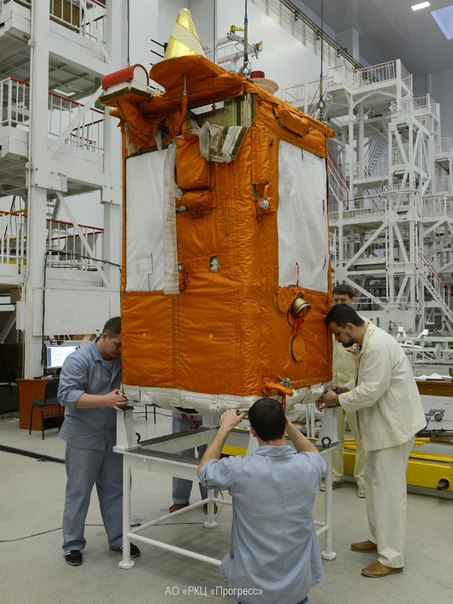The patented small-sized space platform "AIST-3" is a complex of onboard systems and equipmentSAMARA, October 20.
/tass/. The Russian Federal Service for Intellectual Property, Patents and Trademarks has granted a patent to the Samara National Research University named after Academician S. P. Korolev for a utility model of the universal small-sized space platform "AIST-3". This was reported to TASS by the press service of Samara University with reference to one of the authors of the patent, director of the Institute of Aviation and Rocket and Space Technology of the university Ivan Tkachenko.
"Having assessed the prospects for the development of space technology, we decided to create a universal small-sized space platform AIST-3 on the basis of the AIST-3D spacecraft. A platform on which various sets of target equipment can be installed: for example, optoelectronic, infrared, radar for remote sensing of the Earth, and telecommunications, including for providing broadband Internet access, for providing the Internet of Things. In 2021, we received funding from the Innovation Fund of the Samara region, and by December we had completed the preparation of documentation in the scope of the technical proposal. Now the platform we have developed has received patent protection," Tkachenko's press service quotes.
The basis for the small-sized space platform was the project of the small Earth remote sensing spacecraft "AIST-3D", prepared at Samara University in 2017-2019. It was designed taking into account modern trends in space technology - its mass is half that of STORk-2D, created in cooperation with Samara University and the Progress Rocket and Space Center (part of Roscosmos).
The patented small-sized space platform "AIST-3" is a complex of onboard systems and equipment. It is capable of providing orbital flight, orientation with the necessary accuracy and full functioning of the target load with an energy consumption of up to 1,000 watts. The mass of the target equipment ranges from 70 kg to 100 kg, while the mass of the onboard equipment and systems is 169.3 kg. On the basis of STORK-3, it is possible to quickly develop a line of small spacecraft for various purposes.
When developing the platform, Samara scientists faced the question of speeding up and simplifying the process of technological preparation of production for the serial production of such devices. The authors of the patent proposed simpler and more constructive solutions, which are opposed by three previously patented space platforms. As a result, the patent office recognized the novelty and usefulness of the development of Samara University.
"We, in particular, proposed to abandon the milled carrier frame of the spacecraft. This is a common solution, but the milling process is very time-consuming, besides, it is necessary to make equipment for welding, annealing and subsequent machining of the structure. Our suggestion is to use riveted constructions. Digital modeling has shown that this technology is applicable. It simplifies production, which is especially important now, when the world has set a course for the manufacture of hundreds and even thousands of similar spacecraft," explained Maxim Ivanushkin, a member of the team of authors, an assistant at the Department of Space Engineering.

